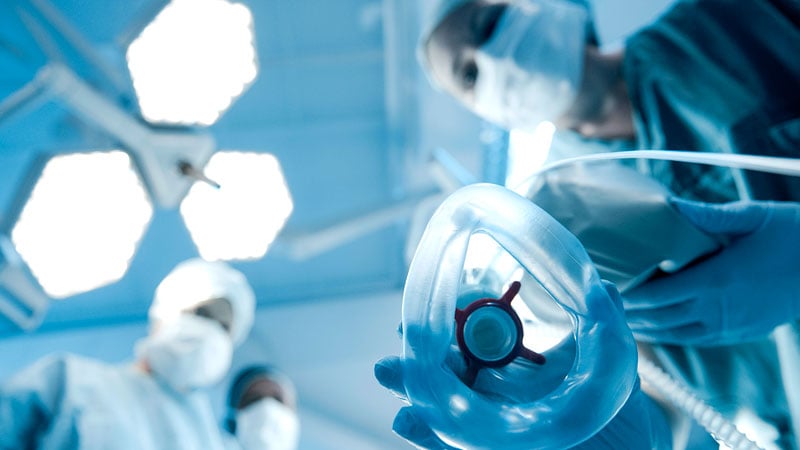The European Medicines Agency (EMA) has issued new recommendations for patients taking glucagon-like peptide 1 receptor agonists (GLP-1 RAs) who need to undergo general anesthesia or deep sedation. To minimize the risk for aspiration and aspiration pneumonia during surgery, the EMA’s Pharmacovigilance Risk Assessment Committee (PRAC) recommended that health professionals should consider the known risk for delayed gastric emptying with GLP-1 RAs before administering anesthetic or sedative agents.
GLP-1 RAs are used in the treatment of type 2 diabetes and obesity. They mimic the actions of the natural GLP-1 hormone released from endocrine cells in the gut to control glycemia provoked by food intake by augmenting insulin and inhibiting glucagon secretion. GLP-1 RAs inhibit gastric emptying and promote satiety, maximizing nutrient absorption while reducing food intake and limiting weight gain.
Risk Is ‘Biologically Plausible’
However, delayed gastric emptying could theoretically increase the risk for pulmonary aspiration during general anesthesia or deep sedation, a risk that the EMA described as “biologically plausible.”
Delayed gastric emptying is already listed in the product information for several GLP-1 RAs: dulaglutide, exenatide, liraglutide, lixisenatide, semaglutide, and tirzepatide, PRAC pointed out. Isolated cases of demonstrated persistence of gastric contents in patients taking GLP-1 RAs, despite overnight fasting, have been reported in the literature.
Gastric emptying delay is, however, attenuated on prolonged treatment with GLP-1 RAs. So although caution is advised, a paper published in the British Journal of Anaesthesia in April 2024 concluded that “standard fasting times likely suffice to manage the risk of pulmonary aspiration for most otherwise low-risk patients”.
Another study published this month quantified the risk, showing that patients taking GLP-1 RAs experienced “only a modest delay” in gastric emptying of solid foods, a mean halftime of 138 minutes on GLP-1 RAs compared with 95 minutes on placebo, and no significant delay for liquids. Thus the authors concluded: “Based on current evidence, a conservative approach with a liquid diet on the day before procedures while continuing GLP-1 RA therapy would represent the most sensible approach until more conclusive data on a solid diet are available.”
Practitioners Should Consider Potential Risk
PRAC said that in general, aspiration and aspiration pneumonia complicate between 1 in 900 and 1 in 10,000 procedures undertaken with general anesthesia. Committee members had reviewed available data, including case reports in EudraVigilance, scientific literature, and clinical and nonclinical data submitted by the marketing authorization holders for these medicines. In light of these, though the committee could not establish a causal association between GLP-1 analogues and aspiration, it considered that healthcare professionals and patients should be informed of the potential risk as a consequence of delayed gastric emptying.
Therefore, PRAC recommended that the risk for residual gastric content being present “should be considered” before performing procedures with general anesthesia or deep sedation.
The product information of GLP-1 RAs will be updated accordingly, including a warning to patients that they should inform the doctor involved whether they take these medicines and are scheduled to undergo surgery under anesthesia or deep sedation.
>>> Read full article>>>
Copyright for syndicated content belongs to the linked Source : Medscape – https://www.medscape.com/viewarticle/be-aware-aspiration-risk-anesthesia-glp-1-ras-2024a1000cvp
